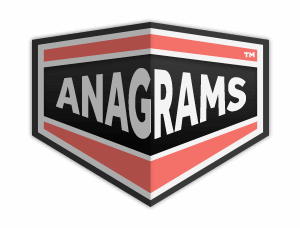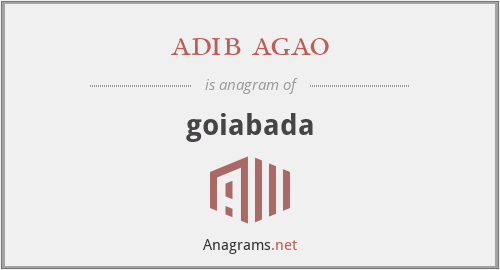What anagrams are available for goiabada?
This page is about an anagram for the word adib agao that can be used in word games, puzzles, trivia and other crossword based board games.
adib agao
Translation
Find a translation for adib agao in other languages:
Select another language:
- - Select -
- 简体中文 (Chinese - Simplified)
- 繁體中文 (Chinese - Traditional)
- Español (Spanish)
- Esperanto (Esperanto)
- 日本語 (Japanese)
- Português (Portuguese)
- Deutsch (German)
- العربية (Arabic)
- Français (French)
- Русский (Russian)
- ಕನ್ನಡ (Kannada)
- 한국어 (Korean)
- עברית (Hebrew)
- Gaeilge (Irish)
- Українська (Ukrainian)
- اردو (Urdu)
- Magyar (Hungarian)
- मानक हिन्दी (Hindi)
- Indonesia (Indonesian)
- Italiano (Italian)
- தமிழ் (Tamil)
- Türkçe (Turkish)
- తెలుగు (Telugu)
- ภาษาไทย (Thai)
- Tiếng Việt (Vietnamese)
- Čeština (Czech)
- Polski (Polish)
- Bahasa Indonesia (Indonesian)
- Românește (Romanian)
- Nederlands (Dutch)
- Ελληνικά (Greek)
- Latinum (Latin)
- Svenska (Swedish)
- Dansk (Danish)
- Suomi (Finnish)
- فارسی (Persian)
- ייִדיש (Yiddish)
- հայերեն (Armenian)
- Norsk (Norwegian)
- English (English)
Definition
What does goiabada mean?
- Goiabada
- Goiabada ([goja'badɐ]; from goiaba, guava] is a conserve made of red guavas and sugar, commonly found throughout the Portuguese-speaking countries of the world. It dates back to the colonial times of Brazil, where guavas were used as a substitute for the quinces used to make marmelada (quince cheese). An abundance of sugar and slave labour were crucial for its confection, in large cauldrons cooking over a slow fire. In rural areas of Brazil, it is still commonly made at home for family use or by home industry outlets (traditional recipes) or as processed food. It is a deep slightly bluish red colour, sometimes a very dark hue of red. Very similar to goiabada is the closely related Colombian bocadillo, also made from guava but with more sugar. It is known as guava paste or guava cheese throughout the English-speaking Americas, especially the Caribbean, and dulce de guayaba, barra de guayaba, pasta de guayaba, bocadillo or guayabate in Spanish-speaking Americas. It is commercially available, most often packaged in flat metal cans, or as long rectangular blocks in chipboard boxes. It is called perad in Goa (India), a former Portuguese colony. In Brazil, goiabada is often eaten with Minas cheese. This combination is referred to as "Romeo and Juliet." It is also popular spread on toast at breakfast. In Portugal, it is used as the filling of the popular bolo de rosas (rose cake) in which a layer of pastry is covered with goiabada, then rolled and cut into pieces that resemble roses. This same cake is called rocambole in Brazil, and also uses a layer of pastry covered with goiabada, then rolled and served, as a Swiss roll. Another popular dessert is the bolo de rolo. Goiabada may come in many widely different possible textures, ranging from a thin paste, meant to be eaten with a spoon or spread on bread or cakes, to very hard slabs that can be sliced with a knife only with some difficulty. Canned varieties are usually half-way between those extremes, being easily cut into soft slices. The many different kinds of goiabada depend on the type of guava, the proportion of sugar, the amount of water, and the cooking process.
Embed
Citation
Use the citation below to add this anagram to your bibliography:
Style:MLAChicagoAPA
"adib agao." Anagrams.net. STANDS4 LLC, 2025. Web. 14 Mar. 2025. <https://www.anagrams.net/term/21906839>.







Discuss this goiabada anagram with the community:
Report Comment
We're doing our best to make sure our content is useful, accurate and safe.
If by any chance you spot an inappropriate comment while navigating through our website please use this form to let us know, and we'll take care of it shortly.
Attachment
You need to be logged in to favorite.
Log In